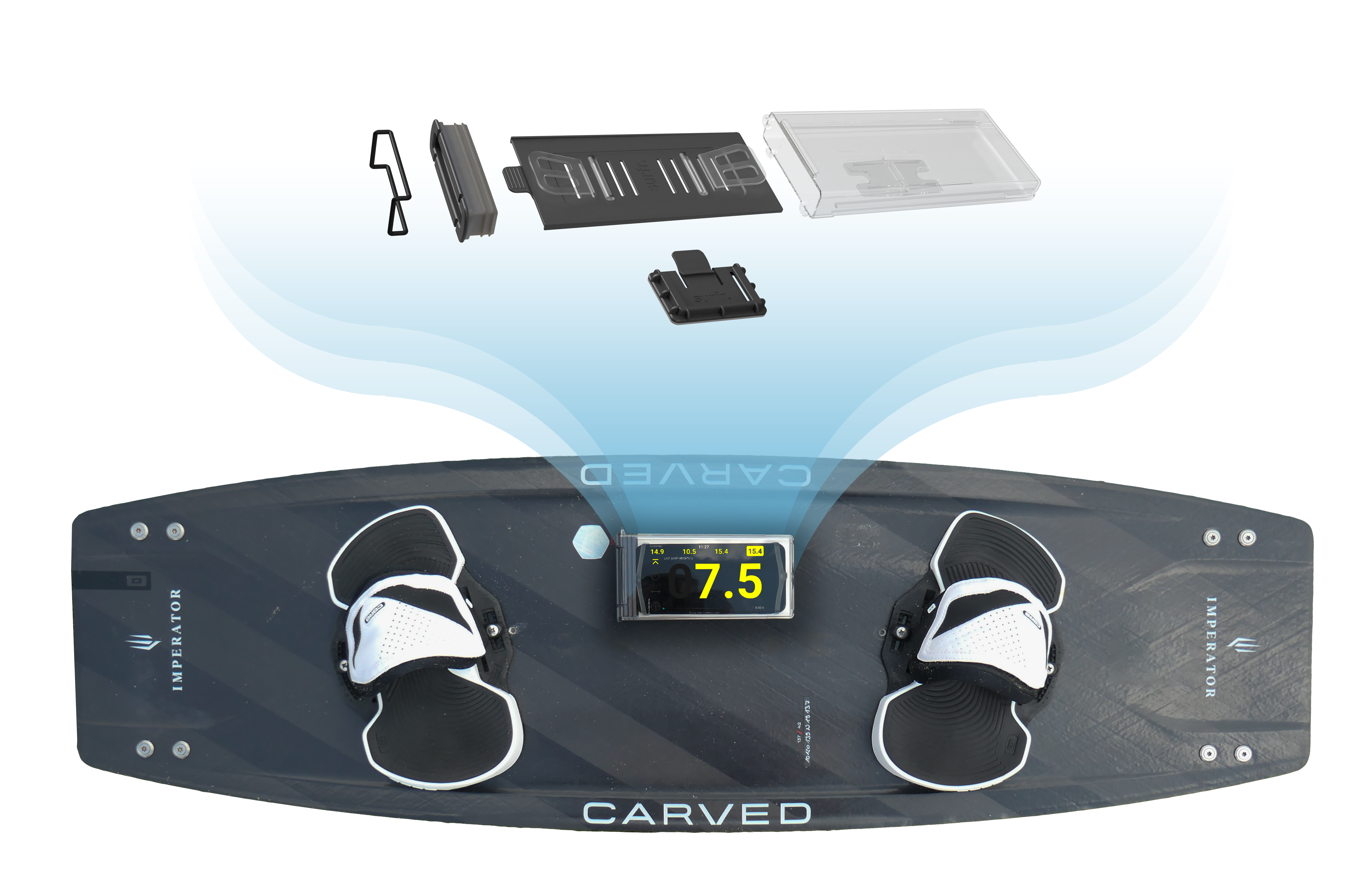PRO – On-board coaching
Jump Higher in no-time
The coach that 'saw' 100.000s of jumps is now available for you, right from your board. Get instant feedback, live on the water, from your digital coach. Lets get higher!
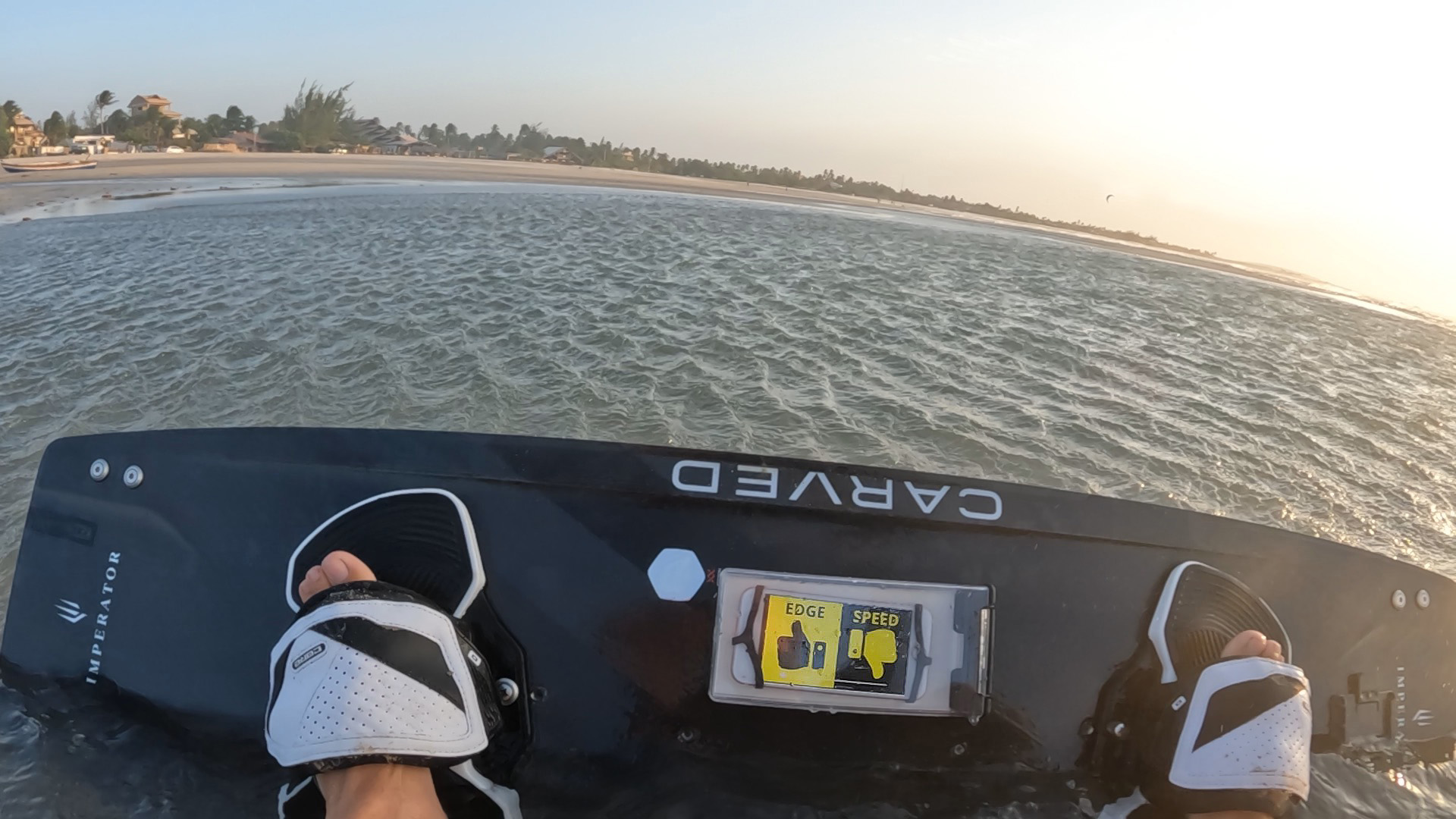
We know the secrets
Speed X Edge
Edging and Speed are two of the single most important factors for riding in control, and getting the maximum boost potential. The Surfr app will clearly indicate how you are doing on both of them right from the board.
In the photo you see a board that is on a proper edge but doesn’t have any speed at the moment. With a clear thumbs up/ thumbs down indicator in bright colours, you will directly know what to do.
In the photo the board is tilted to about 45 degrees towards the water. Please note: a flat board on the water would be 0 degrees.
An example
Learn from the PRO's
Before we dig further into the world of on-board coaching we need a moment to have a look at one of the fundamentals of Surfrs on-board coaching. The POP/Edge chart. To fully understand the on-board coach we're going to have a look at a chart of a beginner (5 meter jump) vs a PRO (15 meter jump). What is a POP/Edge chart? A POP/Edge chart is a chart that shows how you where edging your board in the seconds before take-off and during take-off of your jumps. Before take-off is called 'the approach' and during take-off is called 'the pop'. To understand it quickly visualize yourself riding on a 45 degrees edge towards the water and imagine a take-off. When you take off your board will go flat on the water and even flip over its rail when the board goes behind you once you are air-born. This is exactly what we visualize in the Edge/POP chart. Have a look.
The PRO
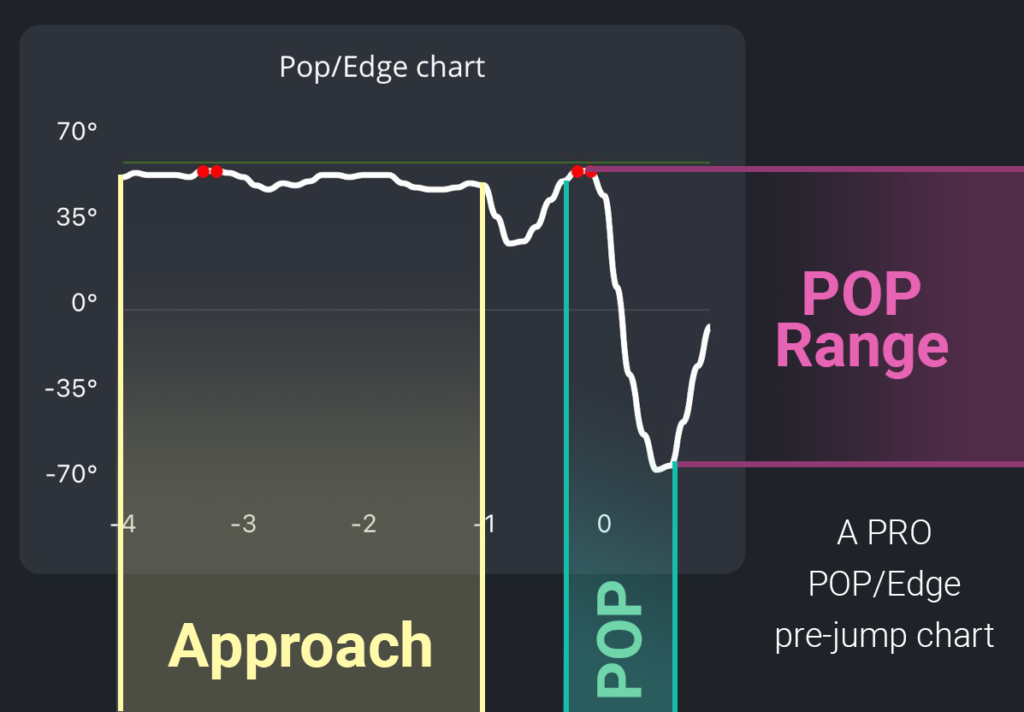
Here you see a POP/Edge chart of a PRO kiteboarder that jumped 15 meters on this particular jump.
It shows the edge angle of the board in Degrees. 0° means a flat board position. You can see that the edge angle becomes negative during the take-off, which is expected since at take-off the board flips over its rail and often goes even behind the rider.
In this case you can see that the
- A Angle (average approach angle) is around 55°. This is simply the average of the edging during the approach.
- P Angle (POP Angle) is 58 °. The POP angle is the maximum edge angle the board reaches at take-off.
- P Range (POP Range) is 120°. It’s the difference between the maximum angle during the POP (58) and the lowest angle during the POP (-62). The POP range is an indicator of how aggressive the rider POPS op the water.
A simple chart but with a lot of data. With the on-board coach you will get a clear thumbs up / down directly on the water on each of these aspects.
Side note: did you see the PRO rider did a short pre-load POP in this jump? It can help you to go even higher!
The beginner
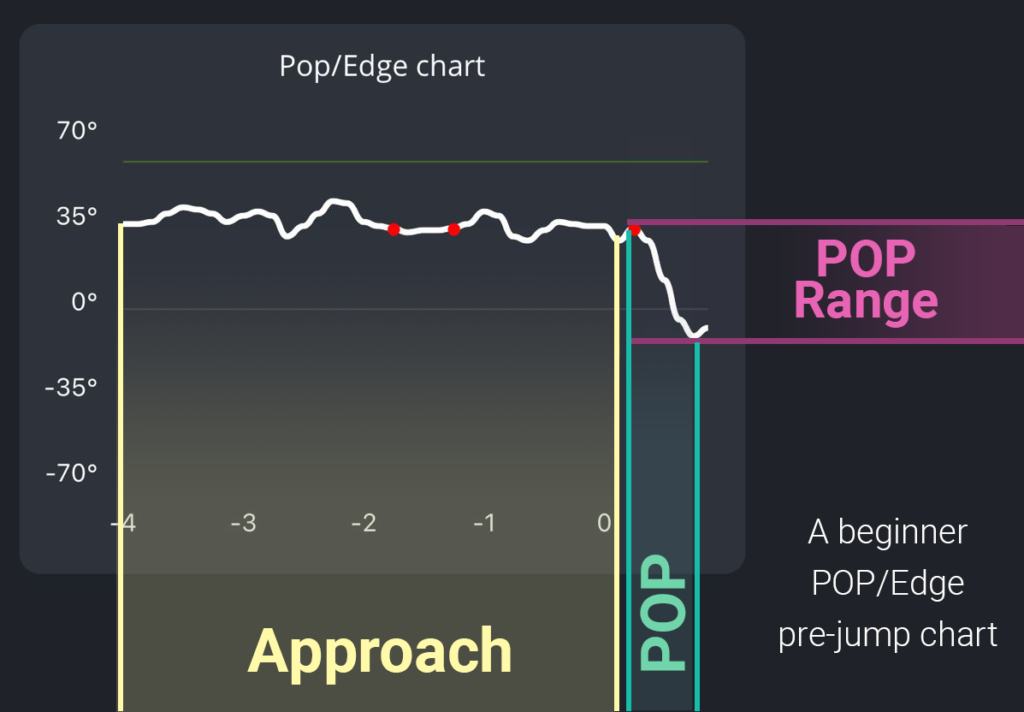
Here you see a POP/Edge chart of a beginner kiteboarder that jumped 5 meters on this particular jump.
It shows the edge angle of the board in Degrees. 0° means a flat board position. You can see that the edge angle becomes negative during the take-off, which is expected since at take-off the board flips over its rail and often goes even behind the rider.
In this case you can see that the
- A Angle (average approach angle) is around 34°. This is simply the average of the edging during the approach.
- P Angle (POP Angle) is 33 °. The POP angle is the maximum edge angle the board reaches at take-off.
- P Range (POP Range) is 44°. It’s the difference between the maximum angle during the POP (33) and the lowest angle during the POP (-11). The POP range is an indicator of how aggressive the rider POPS op the water.
A simple chart but with a lot of data. With the on-board coach you will get a clear thumbs up / down directly on the water on each of these aspects.
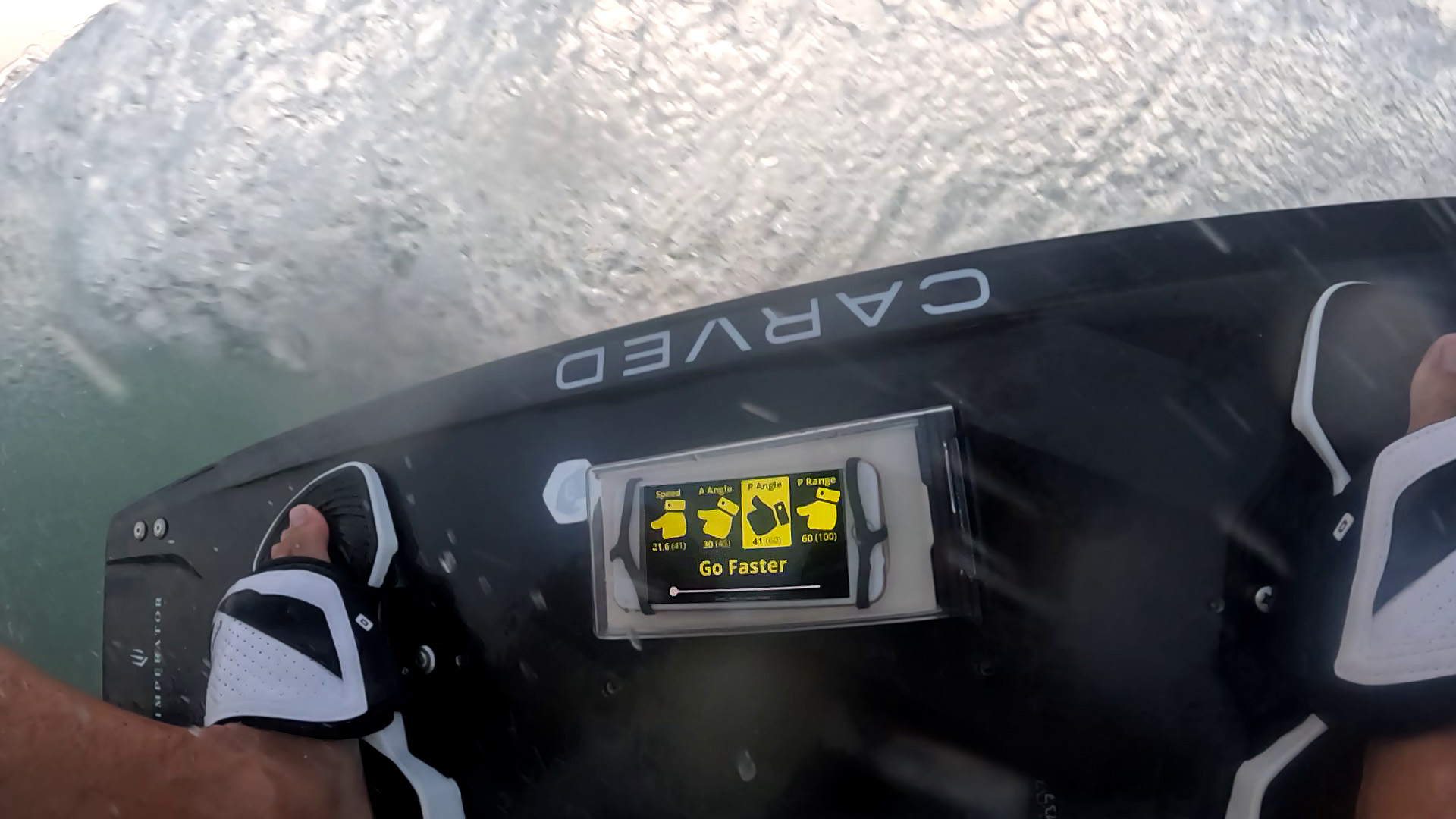
Want to jump higher?
Post Jump Feedback
- Speed
- A Angle
- P Angle
- P Range
As soon as you land a jump you will get a clear and simple analysis of your jump on your board. The following indicators are currently supported:
- A Speed. This is the Approach Speed, the average of your speed measured in the seconds leading up to your jump.
- A Angle*. This the Approach Edge Angle, the average of of you edge angle in the seconds leading up to your jump.
- P Angle*. This is the Pop Edge Angle. This is the maximum edging you reached right before you took of the water.
- P Range*. This is the POP Range indicator. This is a clear indicator of how aggressive your are popping off the water.
Beside these 4 indicators you will also get an easy to understand instruction in Text to work on. In this case ‘Go Faster’.
*By now you should have a good understanding of the different Edge and POP indicators that are showed on the board. If not, scroll a bit back and have a look at the examples listed on this page.
PRO + Board mount = Kiteboarders dream
It doesn't get better than having a board mount and being able to enjoy the board features of Surfr PRO.
